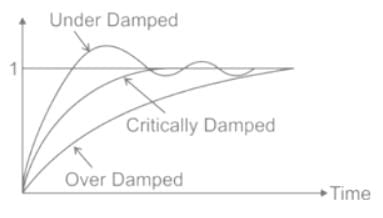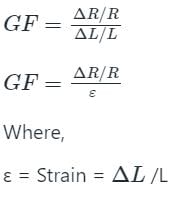Electrical Engineering (EE) Exam > Electrical Engineering (EE) Tests > Test: Error Analysis - Electrical Engineering (EE) MCQ
Test: Error Analysis - Electrical Engineering (EE) MCQ
Test Description
10 Questions MCQ Test - Test: Error Analysis
Test: Error Analysis for Electrical Engineering (EE) 2025 is part of Electrical Engineering (EE) preparation. The Test: Error Analysis questions and answers have been prepared
according to the Electrical Engineering (EE) exam syllabus.The Test: Error Analysis MCQs are made for Electrical Engineering (EE) 2025 Exam.
Find important definitions, questions, notes, meanings, examples, exercises, MCQs and online tests for Test: Error Analysis below.
Solutions of Test: Error Analysis questions in English are available as part of our course for Electrical Engineering (EE) & Test: Error Analysis solutions in
Hindi for Electrical Engineering (EE) course.
Download more important topics, notes, lectures and mock test series for Electrical Engineering (EE) Exam by signing up for free. Attempt Test: Error Analysis | 10 questions in 20 minutes | Mock test for Electrical Engineering (EE) preparation | Free important questions MCQ to study for Electrical Engineering (EE) Exam | Download free PDF with solutions
Test: Error Analysis - Question 1
The instruments that determine the electrical quantity to be measured directly in terms of deflection are called:
Detailed Solution for Test: Error Analysis - Question 1
Detailed Solution for Test: Error Analysis - Question 2
Test: Error Analysis - Question 3
The change in resistance of an electrical strain gauge with a gauge factor of 2.0 and resistance of 50 Ω when subjected to a strain of 0.001 is:
Detailed Solution for Test: Error Analysis - Question 3
Test: Error Analysis - Question 4
A wattmeter reads 25.34 W. The absolute error in measurement is - 0.11 W. What is the true value of power:
Detailed Solution for Test: Error Analysis - Question 4
Test: Error Analysis - Question 5
What is the smallest change in the input signal that can be detected by an instrument called?
Detailed Solution for Test: Error Analysis - Question 5
Test: Error Analysis - Question 6
If a zero-centred voltmeter has a scale from – 5V to +5V, then the span of it is _____.
Detailed Solution for Test: Error Analysis - Question 6
Detailed Solution for Test: Error Analysis - Question 7
Detailed Solution for Test: Error Analysis - Question 8
Test: Error Analysis - Question 9
The difference between the indicated value and the true value of a quantity is:
Detailed Solution for Test: Error Analysis - Question 9
Test: Error Analysis - Question 10
A meter reads 125 V and the true value of the voltage is 125.5 V. Find the static error of the instrument.
Detailed Solution for Test: Error Analysis - Question 10
Information about Test: Error Analysis Page
In this test you can find the Exam questions for Test: Error Analysis solved & explained in the simplest way possible.
Besides giving Questions and answers for Test: Error Analysis, EduRev gives you an ample number of Online tests for practice
Download as PDF



















